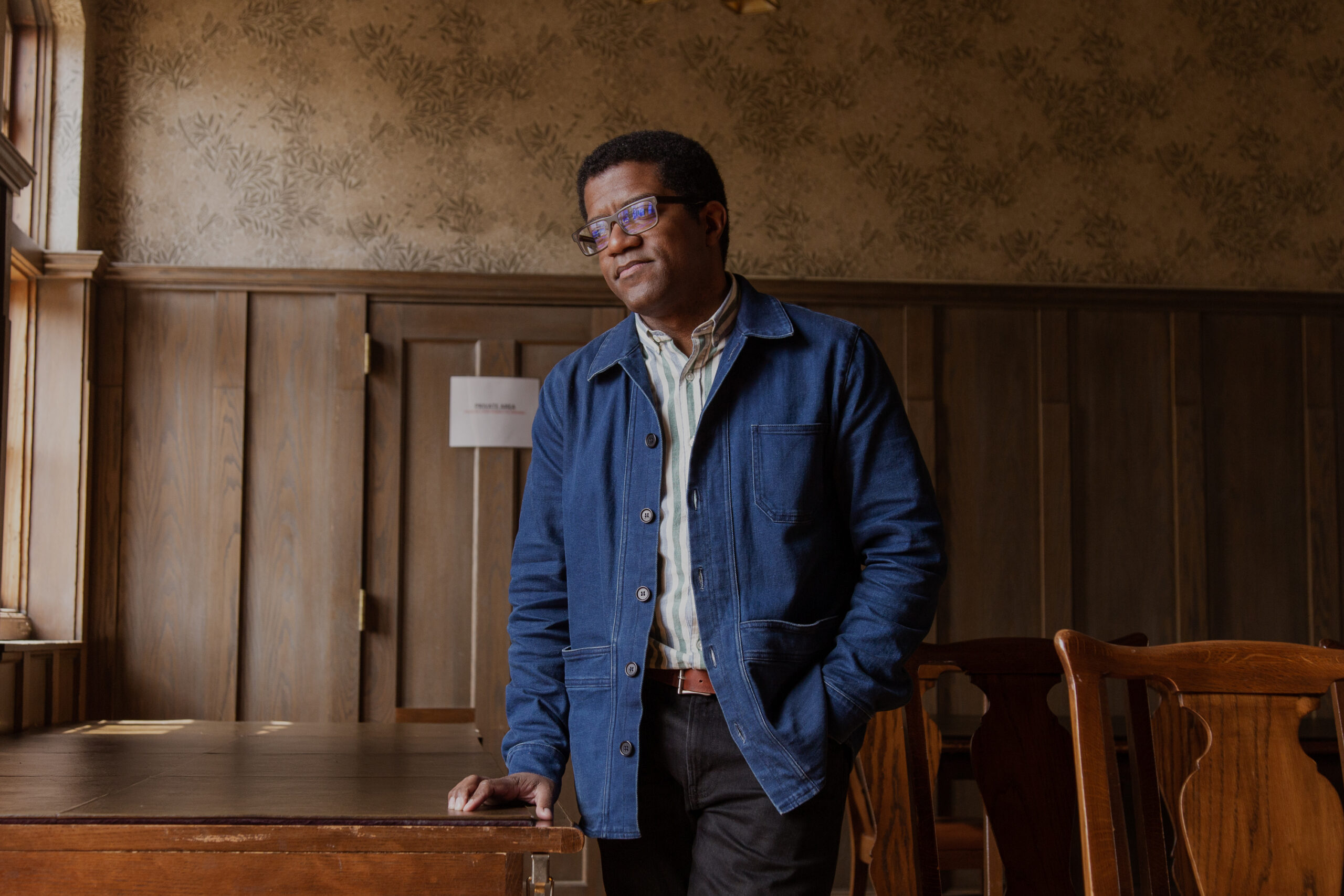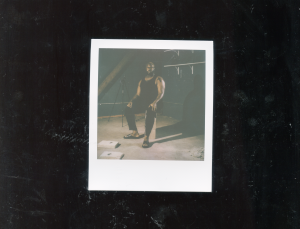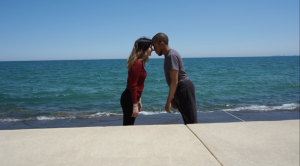
This article is presented in conjunction with Art Design Chicago Now, an initiative funded by the Terra Foundation for American Art that amplifies the voices of Chicago’s diverse creatives, past and present, and explores the essential role they play in shaping the now.
This interview was produced in conjunction with the event “The Obama Portraits: Portraits of Black Presidents” presented by Red Line Service in partnership with Art Design Chicago Now that took place on April 14, 2022 at the Jane Addams Hull-House Museum.
I should have known that my conversation with Ross Stanton Jordan would go unexpectedly. It’s on-brand with how he has shown up in my art world over the years that we’ve known one another. We’ve crossed paths randomly on the streets of Chicago or in Zoom rooms where he’s representing the Jane Addams Hull House Museum as the Interim Director and Curatorial Manager. I’ve run into him at places like the Chicago Cultural Center, at spaces where he happened to be holding events for projects he’s curated, and most recently as I was on my way out of Expo Chicago. What is predictable, though, is each time this happens I’m grateful for the encounter and reminded of the thoughtful and endearing energy that he pours into the cultural vessels of Chicago.
Recently, we changed things up by finding a scheduled time to sit down and chat. I thought that our time would be spent tracing the years of his Presidential Library Project up to our present-day context from 2015, which is the year it began. Or, I thought we would dive into an endless analysis of former First Lady Michelle Obama’s canonized image as interpreted through the brush of Amy Sherald, just like he did during his recent talk on The Obama Portraits, an event hosted at Hull House Museum and presented as part of Red Line Service’s Art Histories Series. Yes, we talked about those things, but, of course, the conversation still took a turn. Before we knew it we were summoning our memories of nearly a century’s worth of fictional and speculative Black president portrayals–everyone from Sammy Davis Jr. in his youngest years, to Richard Pryor (a fellow Peoria native) in his short-lived, self-titled 1977 sketch comedy show. We discussed Key and Peele, Eddie Murphy, Wanda Sykes, and Chris Rock. We talked about the searing words of James Baldwin and humor as a means of survival, often infused with sharp truths and trickster energy. We discussed Black comedians’ role in imagining the unimaginable during a time before November 4, 2008, a time when most Black people could only speak the idea of a Black president in front of an audience of millions if it was presented as comedy. A joke for ideas unattainable and considered absurd by those who historically and currently run those offices.
Then, we discussed the collective bewilderment of the Obama family occupying that position for eight years and the ways that artists have translated this very complicated anomaly. We talked about how, during and after Barack Obama’s presidency, artists have given form to what was formerly a tenacious and cautiously wishful and subtle joke. We discussed how artists are helping us articulate a period in history that many of us are likely still trying to fully understand the reality and impact of.
I always look forward to running into Ross. Although the conversation was edited for clarity and length, what follows below may tell you why.
* * * *
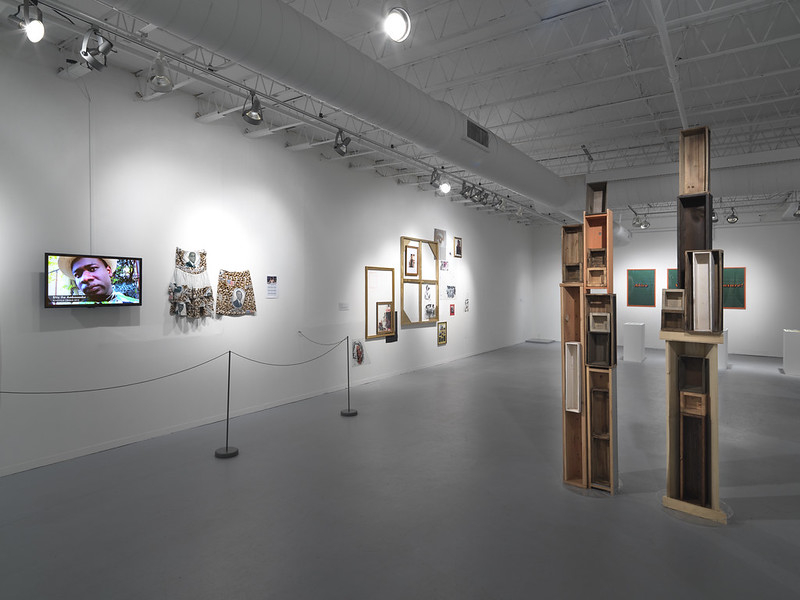
Tempestt Hazel: When looking back through your work [with The Presidential Library Project], I started thinking about how the image of a Black president has existed in popular culture during my upbringing. I started to think of some of my favorites. One of my absolute favorites is Chris Rock in Head of State. The timing of this one is probably not the best or maybe it actually is. I love that movie because every time I watch it, I just crack up. What are some of your favorite Black president pop culture references, maybe from childhood or young adult days?
Ross Stanton Jordan: Oh man, childhood. I don’t even know if I have good ones from childhood because I don’t know if it was something that I was quite paying attention to when I was growing up. It wasn’t like I was looking for Black presidents, though Head of State is classic. It’s a fun and weird example. It’s an example of that genre of Black comedians thrown into fish-out-of-water situations that end up with some kind of power or something in the political sphere. Honestly, my favorite example is the one that I always go back to is the first depiction of the Black president in film and it’s explicitly a Black president and not another character. It’s Rufus Jones For President [from 1933]. It stars Sammy Davis Jr. and Ethel Waters. Sammy Davis Jr. is seven-years-old, he’s already been on the Chitlin Circuit, so he already had a bit of local fame and Rufus Jones For President was the first all-Black cast in any musical. It had significance because of that.
Video: A clip from the 1933 musical film Rufus Jones for President, starring Sammy Davis, Jr. and Ethel Waters. Courtesy of Department of Afro American Research, Arts, and Culture.
TH: Wow.
RSJ: Of course, the cast was great with Ethel Waters and Sammy Davis Jr., as the kid. But basically what happens is it’s a story about America. Sammy Davis Jr. falls asleep on Ethel Waters’ lap — Ethel Waters is playing his mom — and he dreams that he becomes a child president. The idea is that you are supposed to laugh at it like, “oh yes, if Black people all of a sudden can vote then they would elect a kid as a president.” That’s been one of the [long-running] jokes. The other joke was this [false] 1930’s nostalgia for plantation life where Black people [want to go] back to the plantation. It has that nostalgia in it for white audiences. But it’s a funky story about a Black president who would have [people] plant watermelons near the fences to make it so they could be easily stolen. Or craps would be highly regulated so that there’s no cheating. It plays into all these stereotypes about Black people, point for point.
But it has these great bits of Ethel Waters and Sammy Davis, Jr. singing, dancing, and in song. Ethel Waters was at the height of her powers basically and she was about to emerge as being a top American singer.
So it’s a really racist story and it makes me kind of sad watching because you are like, “Man, these people really had to do this show.” But it also has a great deal of talent agency and power woven through it. It’s really fascinating. It tells the story of how we still think about America.
We think about it as nostalgic for a docile nation [for Black people]. Also, it has a bit of, “You don’t know who you are voting for anyway” stuff crammed in. It was made in 1930 and all that stuff is still true now. Those approaches to Black power and Black voting rights are still the same, so that’s a great example.
TH: I always go back to thinking about the role that photographers and photo studios have played in visualizing what Blackness is and Black folks being able to construct our image–and deciding what that process could look like. I think about those spaces created by artists like [James] Van Der Zee who invited Black families to come and present themselves, and for that to be honored through his lens. There isn’t always that mutual understanding on both sides of the lens. Sometimes you have to contend with the lenses of people who are trying to hold things back and suppress self-expression. But then, there are actors, entertainers, musicians, and artists–especially during that time–who endure the terribleness of the stereotypes that they are ultimately put in the position to perpetuate on film while also trying to use those positions as opportunities to show what progress through those roles looks like.
RSJ: Yeah.
TH: The fact that we can have a conversation about a Black U.S. president and what that looks like in Black culture, American culture, pop culture, and visual culture over the centuries and reference that but then also be able to see the trajectory that led to us actually having a Black president in the U.S. is such a wild reflection. How different it was to interpret these images in a pre-Obama era. I think about Head of State and the difference in watching it before Obama became president–and how yours and mine are such vastly different references. For those of us who were well into their adult lives or, like me, coming of age before 2008, it’s an interesting way to weave in and out of memory.
RSJ: It is. And those two references are both comedies. But that’s true with all Black presidents, right? It’s always meant to be a joke in some way, right? But the best jokes are the ones that are true. I think that’s what the story of like Black images throughout history and Black images of presidency are really. To your point, they’re going from where entertainers were forced to deal with the challenges of representations but move forward. And go to a place where comedians, in particular, could really grab onto something and tell the jokes that they wanted to within that film context–and say what they wanted to say. In Eddie Murphy’s first appearance on Saturday Night Live wasn’t there a joke about a Black president?
Video: A clip from Eddie Murphy’s “Delirious,” a stand-up set that became an HBO special in August 1983. Courtesy of YouTube. CONTENT WARNING: strong and explicit language.
RSJ: Anytime someone gets a chance to describe that tension about race and class in America and work to have a Black person in control of that narrative or that story, it changes everything. I could laugh at it wholeheartedly, but it basically means that everyone can participate. That’s why things like Head of State, Eddie Murphy’s stand-up [are so important]. And not just about Black presidents but also things like Harold Washington’s campaign here in Chicago, or Jesse Jackson’s ‘84 and ‘88 campaigns…
TH: Keep Hope Alive! (Jesse Jackson’s 1988 presidential campaign slogan)
RSJ: Yeah, exactly, yeah. Comedians take the idea of a Black president and really run with it. It’s a lens where they can talk about race, the perpetuated dream of an America where anybody can be president and how that is a lie but also how we also still fight and strive for it. Right? That is why, usually, Black Americans can be like “yes, we kind of believe these things aren’t true in the material reality around us but we still have to move toward them regardless.”
TH: Right. Right.
RSJ: That’s where I see the difference between those things [when it comes to] Black agency. It’s more total and more complete. The other version I love is Key and Peele’s “Anger Translator.” The [White House Correspondents’ Association Dinner] is a media event and has people who work in media there watching it. It includes the President and it includes the White House reporters who are assigned the White House which is a prestigious place to report out of. It’s about the media and is the media at the same time. So, they had Key and Peele at that event performing that “Anger Translator” with Obama, who himself is an incredible performer with incredible comedic timing. You know, that kind of says a lot about not just the background of Obama, but also the background of a Black president.
Video: A clip from Wanda Sykes’ 2009 HBO special “I’ma Be Me,” taped at Warner Theater in Washington, D.C. Video courtesy of YouTube. CONTENT WARNING: strong and explicit language.
TH: Yes!!
RSJ: It’s not just Obama’s biography but all those other comedic versions: it’s Eddie Murphy, it’s Chris Rock, it’s Wanda Sykes, it’s all those people adding up through that performative work. And us responding to it. It’s one of the [comedic and performance] standards and they have it on that stage with a Black president–that’s like the highest level of meta that you can get to. It’s hilarious.
TH: Your work on the Obama Presidential Library project, a project that you started years ago, it is in a lot of ways an archival project. I often think of archives as portraits. Though archives are very skewed–it can be materially skewed, content skewed, and so on–but they’re ultimately portraits. I would just love to hear you talk more about how the collective imaginary plays into your understanding of a presidential portrait–whether in how you’re currently thinking about the Obama Portraits or how you’re thinking about your past project? And I ask this while referencing archives because the archive often includes multiple players within a repository shaping it so it’s a collective effort, even if it is a very directed and potentially skewed or incomplete composition it’s still a collective imaginary or intentional articulation of what a portrait of someone is.
RSJ: Yeah. I love the archive as a portrait. It’s such a good way to put it as a biography almost that’s incomplete or can never be complete and has different parts. I love that analogy. I mean the way that I pose the idea of a portrait in the talk was that I asked them to close their eyes and think about November 4, 2008. Where were they? Maybe they were working that morning or were getting ready to take a shower and felt a little giddy. Or maybe they didn’t notice that anything happened on this particular day. Or maybe there was a different air when they went to the grocery store or went to their corner store to pick up something. Maybe people were distracted at work on November 4, 2008. Then, maybe that evening they were out celebrating then they heard fireworks go off from where they were. Maybe they were in Chicago and went down to Grant Park to actually be in that crowd. That feeling and that memory…that kind of exuberance of that moment also is a portrait. It is our own personal portrait of that moment and what Obama’s campaign meant–and that is something [significant]. So we all have our portraits, in our own brain. They are not articulated in paint on canvas, but in my mind, that’s where the collective imagination really begins as a figure of our own emotions about a particular instance. And this particular instance registers as very high, even if you weren’t involved in it because it has to do with the ultimate democratic project of the entire country. That’s one version of a portrait that I think I want to posit and hopefully that gives or expands what a portrait is.
I work at the Jane Addams Hull-House Museum. We are a historical site that’s dedicated to the legacy of Jane Addams, the first woman to win the Nobel Peace Prize. But in many ways, the building is what’s left of her legacy concretely and materially. And this kind of becomes a portrait of her in some way, too, and so a portrait, I think, it’s important to think of a portrait as many, many, different things.
TH: Exactly.
RSJ: And of course there’s the Obama Portraits. Ultimately, because it really is a first set of portraits that have traveled the country and it’s utterly rare that two images can hold the attention of not just of the American public but of the various institutions of contemporary art and design that it’s coming to around the country. And those two portraits are critically important as they move around because we are adding so much to them. Each of us brings so much to those portraits, which kind of undermines what the artists have done, which is a huge significance. It is a gift to the American public to have the portraits but then [their significance becomes] so much bigger than the portraits themselves.
TH: There’s part of me, too, that thinks the post-Obama presidency climate really creates a longing and nostalgia for an Obama era–even with all its problems and disappointments. In that sense, those portraits are fulfilling an unsatisfiable desire for the Obamas in people‘s lives at a time when things are chaotic. I might be making a lot of assumptions about people’s enduring love for that family and those eight years, but I believe the portraits will continue to draw attention because there’s a longing for the things we remember, even though it wasn’t that long ago and even though it wasn’t all good. It feels like lifetimes ago but…
RSJ: Yeah, this has been on my mind because one of the seeds of my own Presidential Library Project was Hamza Walker’s exhibition Black Is, Black Ain’t at the Renaissance Society. I think it was up in Chicago while I was living here, but I don’t think I saw it in person. In the book he writes about how when Obama was elected, it was great to see history being made instead of repeating itself. I think that [essay] was a great way to deal with this idea that we had to be moving forward in this kind of racial progress line when actually, there’s probably no forward at all. It’s probably more cyclical, spiral, and seasonal than anything. That’s certainly true with the election of Trump and the intense backlash from Obama’s presidency. I think it’s easy to say Obama’s presidency and Michelle’s First-Lady-ship created a backlash that was so powerful that it really did break [the country]. It brought out real racist terror that fueled a lot of dangerous and significant changes that we’re still dealing with right now.
Six years, right? It does make you nostalgic for that feeling in November, 2008. The feeling that change is possible, that change can be positive and good and it can be a definitive feeling.
But, of course, that’s maybe not the case. There’s always going to be pushback and that’s why I like the images of Black presidents because they remind you of those challenges. None of the comedians’ portrayals and even the dramatic portrayals of Black presidents, they’re not ever triumphant. They’re ambiguous and undefined, right? They can’t even exist, they tend to fall apart before they’re complete. A great example of this is the great Richard Pryor. He had a TV show that came out in 1974. In it, he does a press conference as a Black president. It’s the first episode of the first primetime show to have a Black person producing it, showing it, and starring in it. That’s how big Richard Pryor was.
Video: A segment from the first episode of The Richard Pryor Show, which aired September 13, 1977. Video courtesy of YouTube. CONTENT WARNING: strong and explicit language.
TH: Yeah, my hometown hero! He’s from Peoria, Illinois.
RSJ: [His show] was only on for four episodes because it became too controversial to show…
TH: Really?
RSJ: Yes. It had every major star that you could think of at the time. It kicked off with the first episode when he played a Black president. He does a press conference and the press conference dissolves into utter chaos by the end because the forces of the country and even in the press room can’t handle themselves.
James Baldwin did a tour of San Francisco. I think in ‘64 or ‘65. He was hanging out with a bunch of young Black kids somewhere and they were super fired up and angry. This was slightly post-Civil Rights Movement, right? That movement was no longer connecting with them and they know James Baldwin is an important figure so they are talking to him and asking him questions about the country. The young folks are like, “…they won’t have a Black president…they don’t let Black people do anything in this country.” And Baldwin responds if you believe that, then that’s a problem. You can’t believe that kind of thing, you can’t let other people’s thoughts about you limit your possibilities.
But then, Baldwin also talks about how the America we have today can’t have a Black president–you have to have a different country altogether in order to have a Black president with that kind of power. He said that in ‘64, I think. It really makes me think about what’s happened and what country we live in Post-Obama like–is it actually different? Post-Trump, is it actually different in any significant way?
Video: A clip from the James Baldwin vs. William F. Buckley debate at Cambridge University in 1965. Video courtesy of YouTube.
TH: That’s a really good question.
RSJ: James Baldwin isn’t wrong.
TH: I’ve never come across James Baldwin being wrong.
RSJ: Exactly. So the more I think about the nostalgic question and the archive question, I think about what is different and if things don’t feel different, then what was all that history telling us?
TH: Well, let me ask you a follow-up question, and this may be an unfair question to ask. To the question — is it different — how would we know? I want to think that things are better, but to me, it’s more accurate to think about it like you have the same exact ingredients on three different tables. You can make three different dishes, but they’re all made with the same ingredients. They just look different. But I like to think we added some peppers or new spices to the recipe over the years–or removed and replaced some. How would we know if it’s actually different?
RSJ: Yeah, how would we know if anything’s changed or if things are different? I don’t know if I have an answer to that question. That’s so tricky.The only way I can answer it is to look backward to look forward. To track the change, my sense is to recognize [things like] the struggles of Ethel Waters and even Sammy Davis Jr. Their struggle is the same type of struggle we deal with today, right?
TH: Yep.
RSJ: For some reason that feels resonant to me and illuminating. It’s more like, I have a better flashlight now, I can see better and that may be the biggest change. I can see better and I can see the past more clearly and the future a little bit more clearly.
That might be the thing that’s most urgently significant. Being able to aim that critique or criticism or that flashlight in the right direction seems to be the important lesson. It might be the only thing that has significantly changed. The other thing that’s changed or what marks some sense of change is that, fascinatingly, Obama is building a presidential library but the Obamas have also built a huge media network. They are actually able to actually produce things and images that they want to in the world, on their terms. That kind of power and influence can’t be understated in the course of history. It really is a powerful thing. They are kind of like Oprah 2.0.
TH: Totally.
RSJ: And the question is how do they wield that–what images are we seeing–and how are they funding that? Does it actually benefit us? To have that level of influence at this point in history seems significant. It’s hugely different.
TH: Those are really great points. Thank you for humoring me with a response to that question because I don’t know how I would answer it if I were asked.
Speaking of what has changed, the work that you’ve done around the presidential library or reflections on Barack Obama‘s presidency and Michelle Obama’s work has included you working with a lot of artists and creative folks. I’m curious to get your thoughts of how, perhaps, the artistic treatment of the image of a Black president has changed during and post-Obama, especially before 2008 and after. From the time when many people thought to themselves, “this won’t ever happen” to seeing it happen live and direct. What do you think about the evolution of the artistic treatment of the idea of a Black president?
RSJ: This is a great question. And there’s an artist named Aisha Cousins, who’s based in New York. I’ve known her for a long time. She’s done several projects around Blackness, Obama, and Black voting. As Obama was being elected, she did a project, it was a year-long performance called From Here I Saw What Happened And I Cannot Understand (aka the Obama Skirt Project). It was about the bewilderment of thinking about what you do after you’ve elected a Black president? Before it was a joke and it was almost more fun to play around with the joke because you can articulate a dissatisfaction with America and all its racism. It was a point of humor and then you’d just continue with your day, right? That’s what the Black president joke is all about. But once you have one, you are kind of bewildered.
TH: Yes.
RSJ: What do those jokes become and then, what do you do with that new found jump over this hump? Does it mean what we thought it was supposed to mean? So her project, I think, is meant to question the path, in terms of what a Black president meant before Obama, and also the ambiguity and unknown of the near future. I still feel like we are in that place. I still feel like we don’t have good answers. Certainly Kehinde Wiley and Amy Sherald’s images of both Michelle Obama and Barack Obama are tremendous contributions to help us figure out what that moment meant. But I feel like it’s still unresolved partly because of the backlash that we faced after or that came with Trump’s election. It was so violent and so aggressive that it made you question what the meaning of that presidency was. What was it symbolically?
Something within this area of bewilderment and what the portraits do is they kind of canonize two artists and they canonize the two Obamas. It canonizes them among a class of political elite and what political scientists call the American political pantheon of a political class–it puts them in that territory, which is an important and powerful thing. I think that we are still bewildered.
TH: As you were talking, I began to think about the portraits themselves and how they’re unconventional in the grand scheme of presidential portraits. But also, even though they’re made in the style of each of these artists, what I find to be compelling is that each of these artists’ make paintings where the figures are in spaces that are vibrant, vast, or encompassing. There’s so many ways to interpret those aesthetic moves which reflects the multiple ways of understanding that eight-year-period plus the election, which had its own energy. Each painting’s surroundings makes both of them feel a little precarious. To me, there’s a way to interpret it as symbolic of what their time in history might look like and what might be understood of them in the future. They reinforce this idea of bewilderment, as Cousins’ work does. Like, what just happened?
RSJ: That’s a good way to put it. I think that might be right because even when you go look at them in person–I saw them in the Art Institute [of Chicago]–they have a power beyond the physical thing that’s in front of you, which is what good portraits can do.
But there’s something about them that feels concrete and specific. Looking at Barack Obama’s portrait, he’s sitting in this chair and I associate that chair with a living room and in one of my grandmother’s homes. And that chair seems so specific in the way that painting is arranged. I said in my talk that it looks like he just came to visit and sat down with you. And he’s listening. The arrangement of the garden of the wall behind him is highlighted with flowers that are really connected to Obama’s past: his father’s Kenyan heritage, his Hawaiian heritage, and his Chicago heritage. That encapsulates that campaign because it was about which person represents America in a way that we imagine it should be. And that’s what he should lead the country for. That’s why I always think about the presidency and the campaign as two different things altogether. It’s usually the campaign that we are often remembering. We remember parts of the presidency but, really the campaign fueled both of them. They fueled our affection and attention.
TH: Right.
RSJ: In Michelle Obama’s portrait she has a specific dress on from a designer she selected. I don’t know who made Barak’s suit. But, in Michelle’s portrait, [she’s showing how she’s always] doing eight things at once: she’s pushing this certain look of patterns, she’s wearing a designer that’s well known in circles of the class of women that she’s a part of, and the way that the dress takes up just as much space as Michelle’s upper body. [Amy Sherald] really gives the feeling that Michelle is doing two or three things or eight things at once. That’s also what the portrait is about. And her look off in the distance, a kind of one hundred years gaze, is like I’m contemplating something not happening inside the frame of the painting but someplace else. It is a thoughtfulness that she clearly has.
Then, of course, it is always important to remember that Michelle Obama, while she was in Chicago meeting young Barack Obama, she was a significant player in Chicago and far more significant than her husband. I like the idea that in that portrait, Michelle, gave a sense of a fluency with power, fluency with approachability, which the portrait also exudes. It gives her that same status well beyond what other First Ladies have achieved outside of, maybe, Hillary Clinton. I think that’s significant and it’s good to see the portraits travel together. It reinforces the idea that the presidency is an office and the First Lady’s office is also an office. And that the presidency has become a team effort in the modern era.
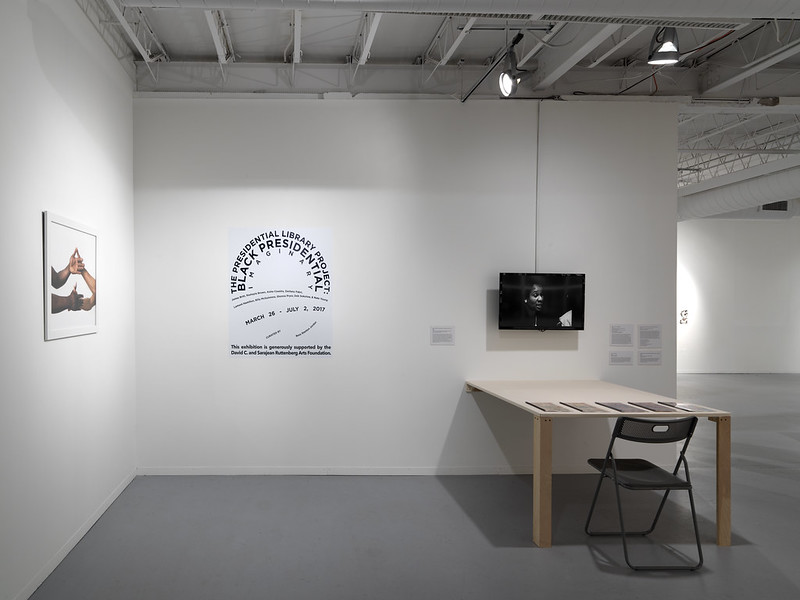
TH: We started with the past so, for my last question, I’ll go with a question about the future. Between all of these different musings that you’ve had, where do you see The Presidential Library Project going from here? Will it continue to evolve?
RSJ: There are a few things. I’ve been working on a publication for years now. That publication is meant to be an exhibition catalogue about the other Obama Presidential library projects that already exist and have already come down. Jorge Lucero opened a project called Obama Presidential Library that was a collection of the public’s submissions on what they wanted in the presidential library. That poses a different model for how we think about a presidential legacy, an archive, and how we build museums. [It’s a] beautiful project. Things have come and gone that still represent models that could be interesting to use in the Obama Presidential Library in the future. I’m looking forward to getting that publication up and out.
I think we’re not finished telling our collective experience about those eight years. We’re just not done with it. We’re not done with this question of what does our democracy look like and who is it available to? That is the primary question. And I feel like the answer has 100% to do with how we imagine who is in power and who gets to be in power. It has everything to do with our imaginations.
The reason I started the project was to have those conversations with the people who build the foundation, like artists. I still think that artists can play a powerful role in positing and poking at our [understanding] of what our imagination can do. I hope that in the future, as I move forward with the project, that there is space for artists to work directly with the [Obama] presidential library and that they are open to that kind of thing.
And I hope that those publications can actually be challenging and probing because the public sphere that we live in really needs those kinds of conversations at every level that it can happen.
TH: Always.
RSJ: It was so great to be invited by Red Line Service to talk about the portraits because, then, it’s aimed at an audience that is neglected in these kinds of cultural conversations. There’s no reason for that. That audience still wants to deal with it, too. So we have lots of talking to do, lots of art to make [in order] to probe our recent past, and understand where we can go and what kind of steps we can take to extend our democracy.
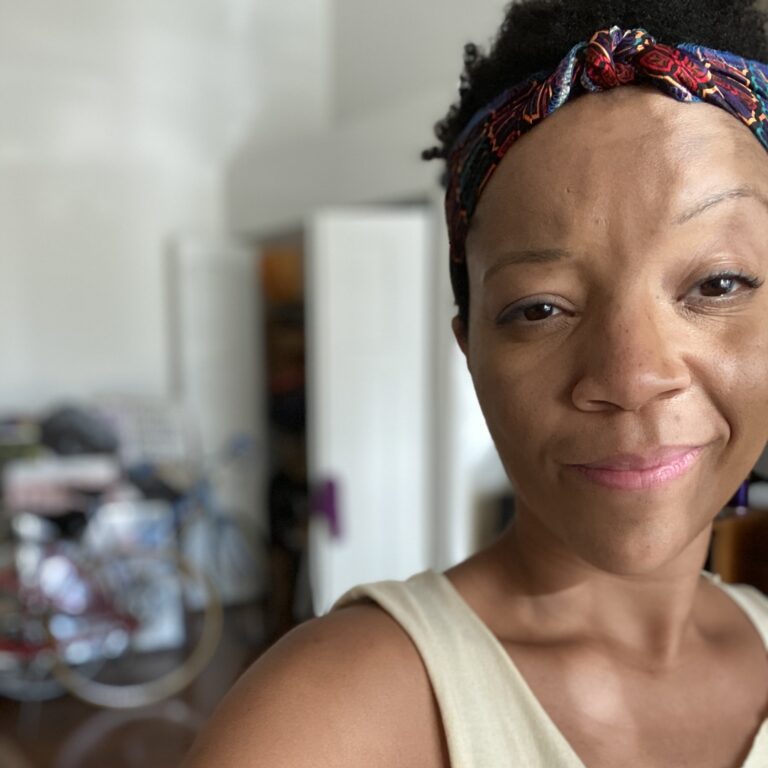
About the Author: Tempestt Hazel is a curator, writer, artist advocate, and co-founder of Sixty Inches From Center. Find more of her work at tempestthazel.com.
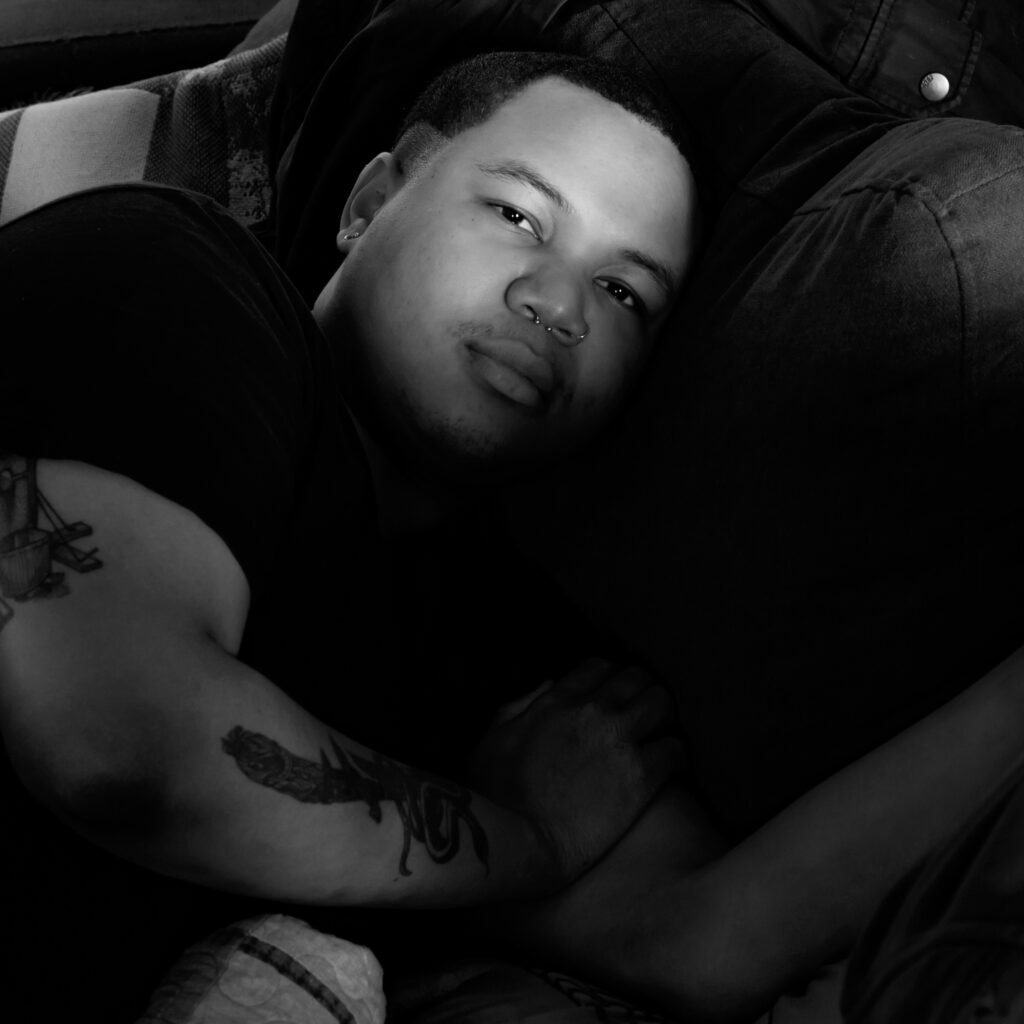
About the Photographer: Joshua Clay Johnson is an artist living and working in Chicago
